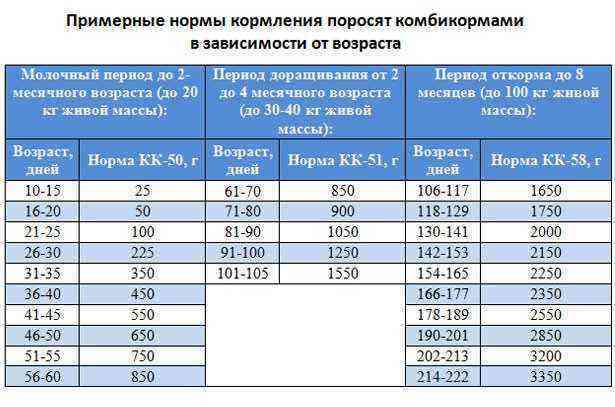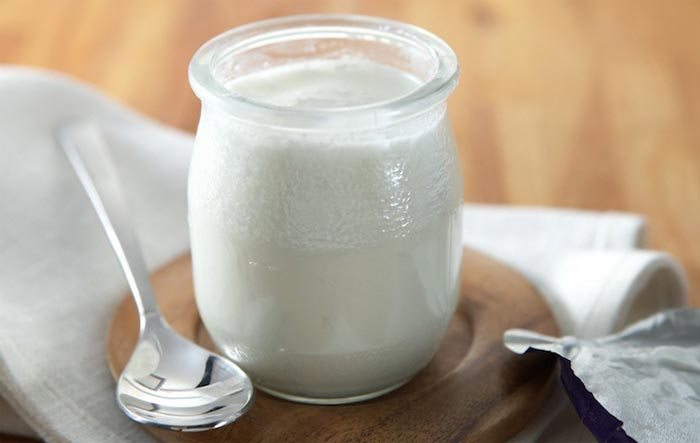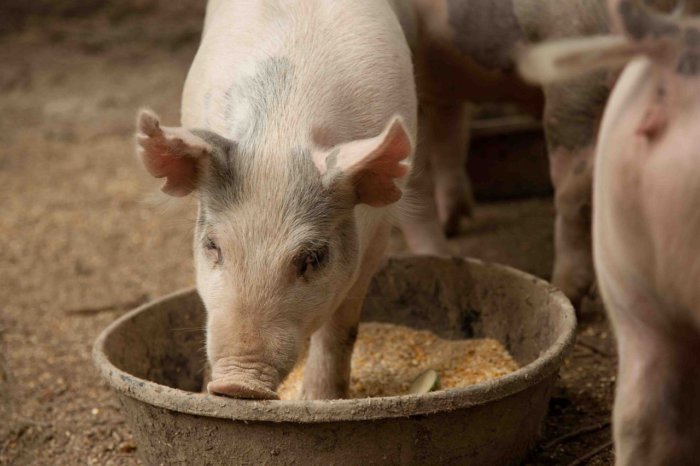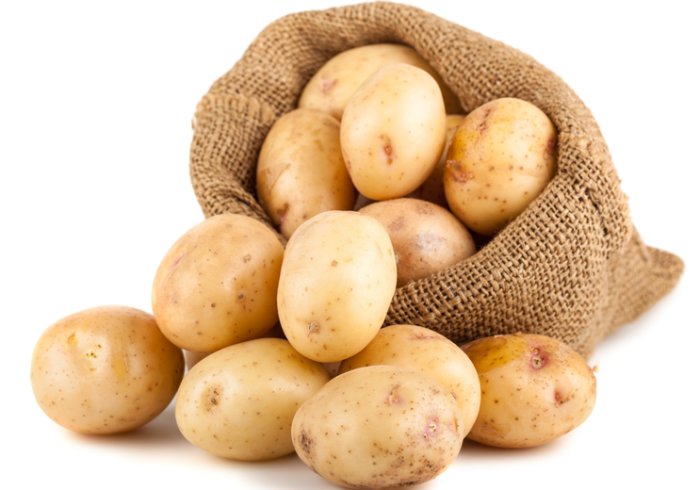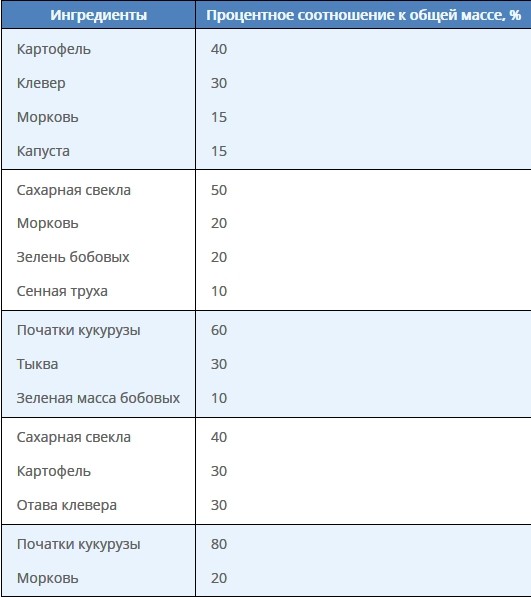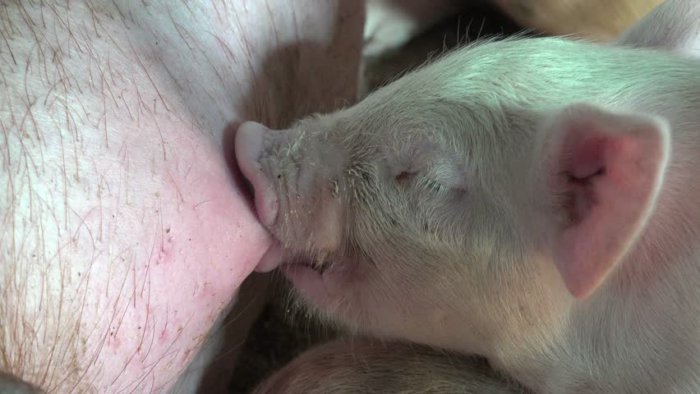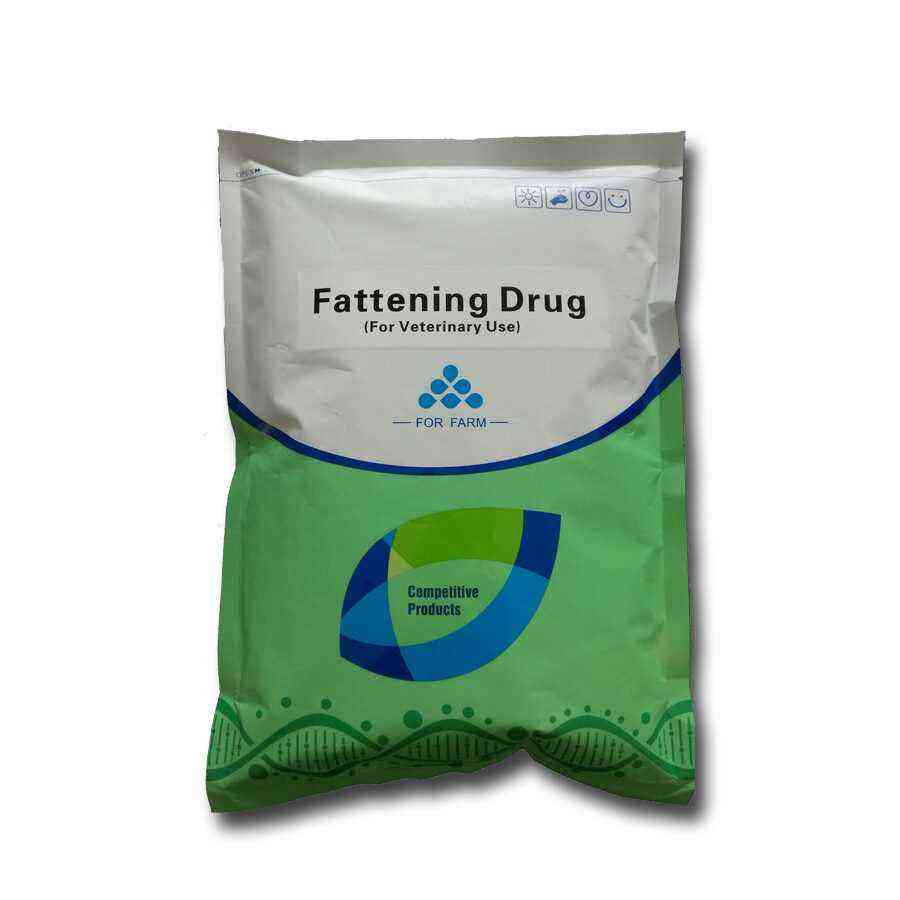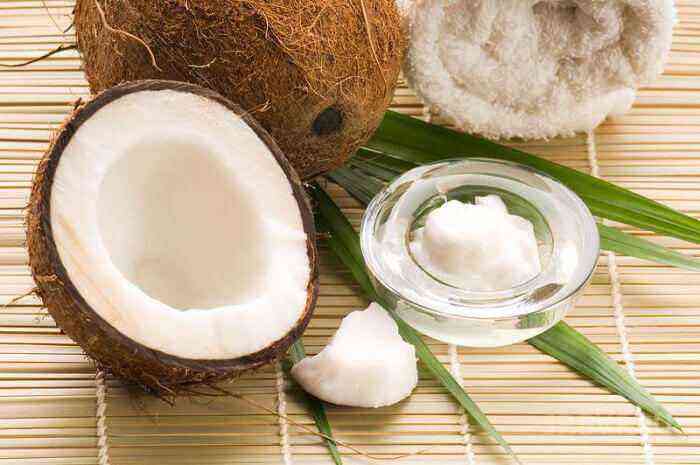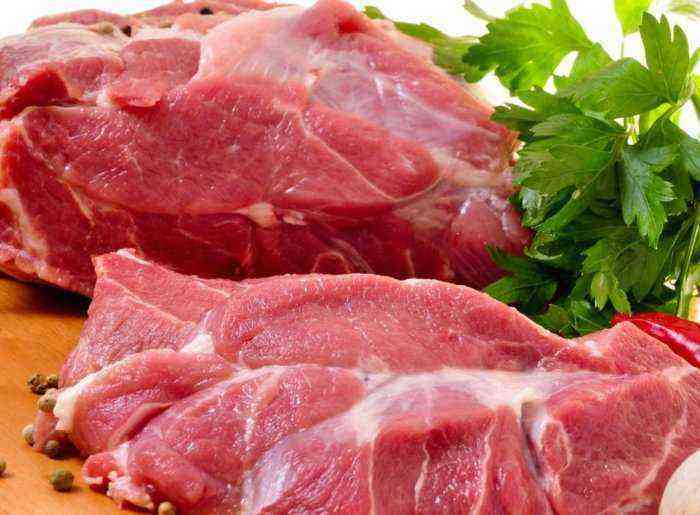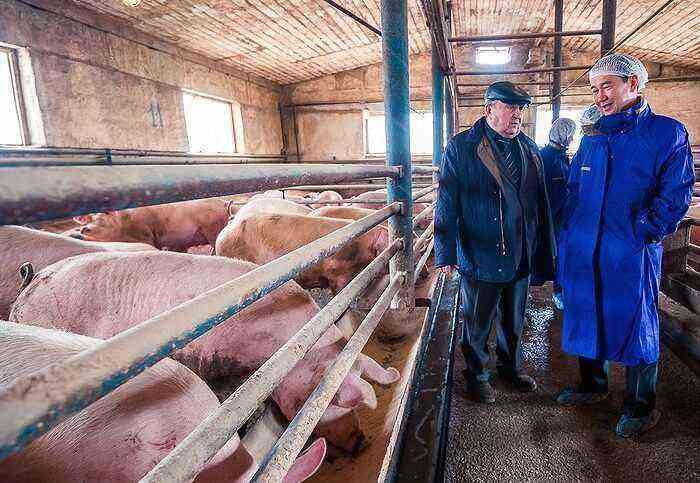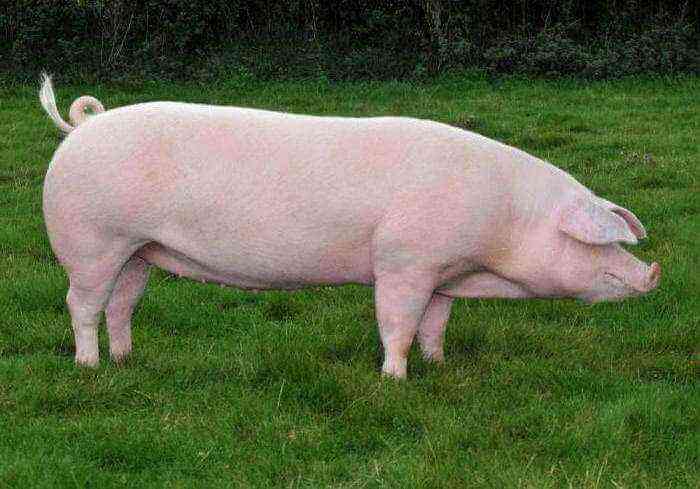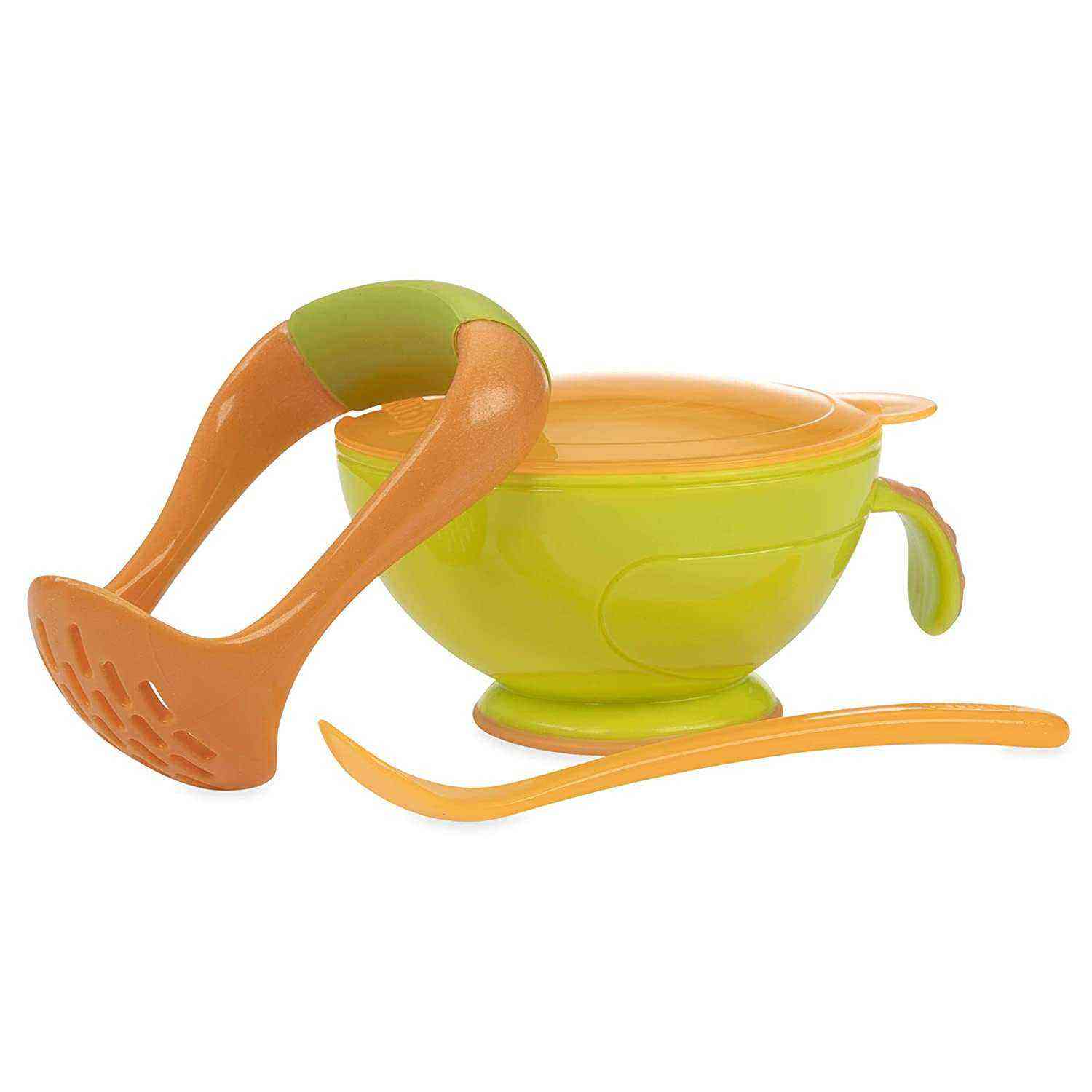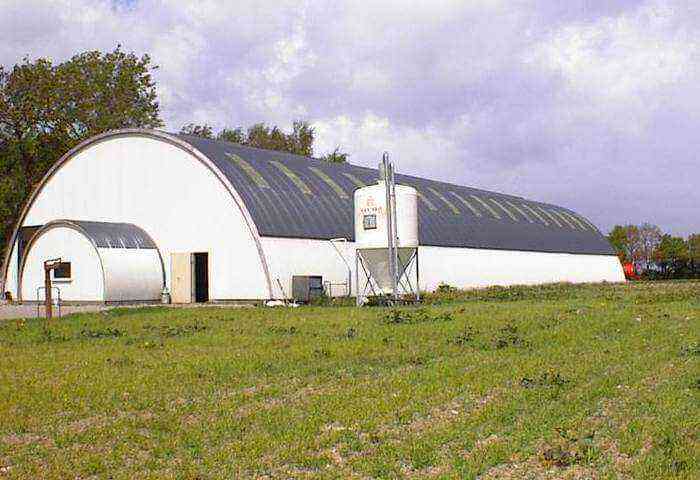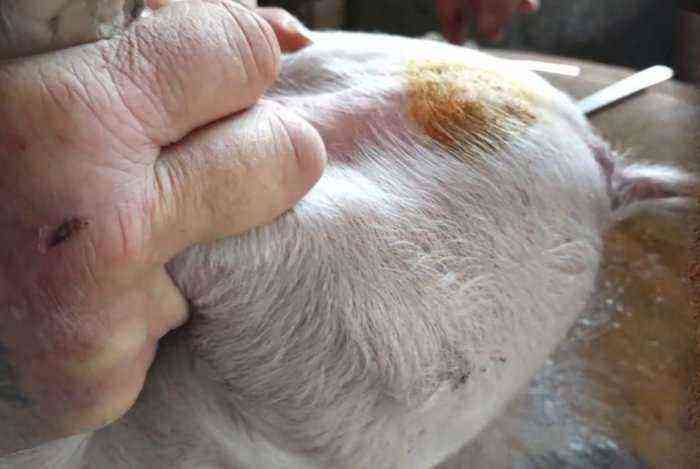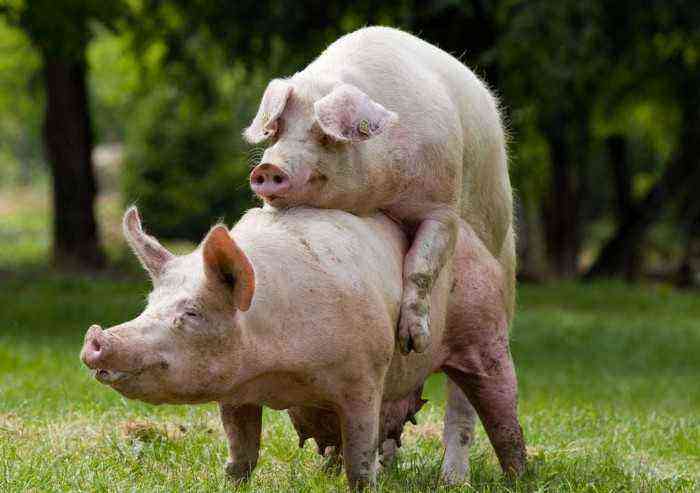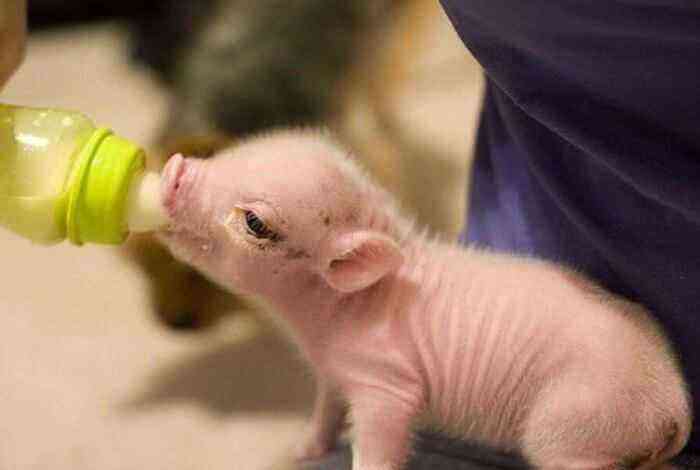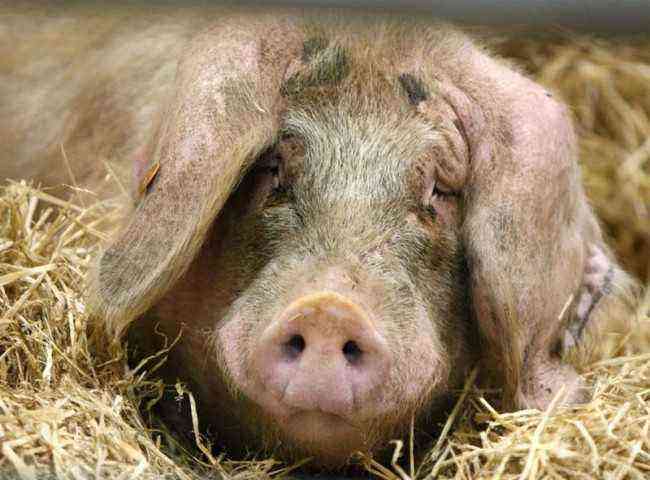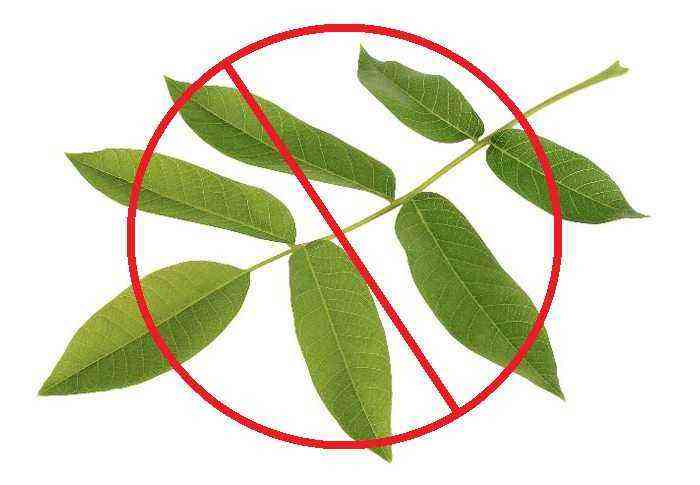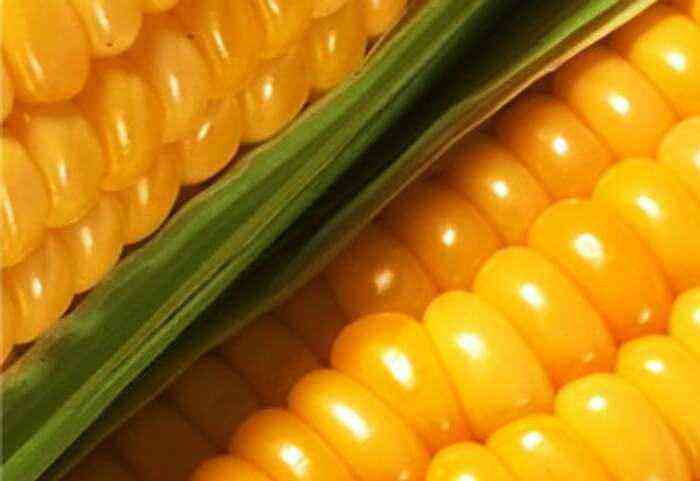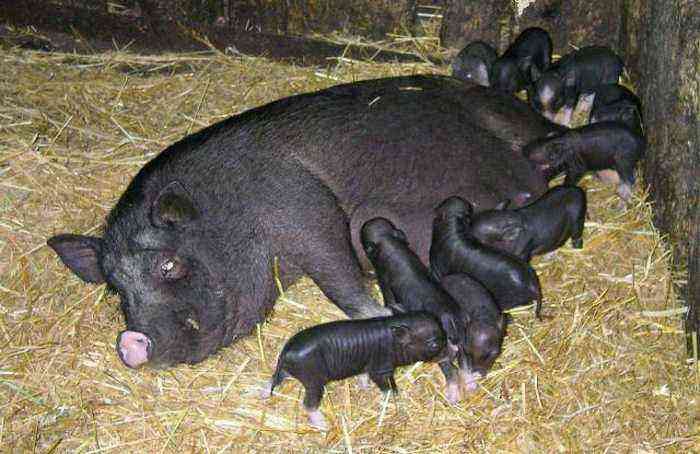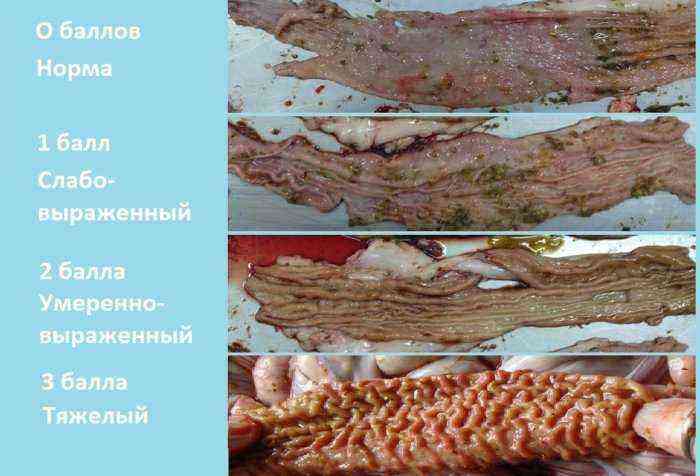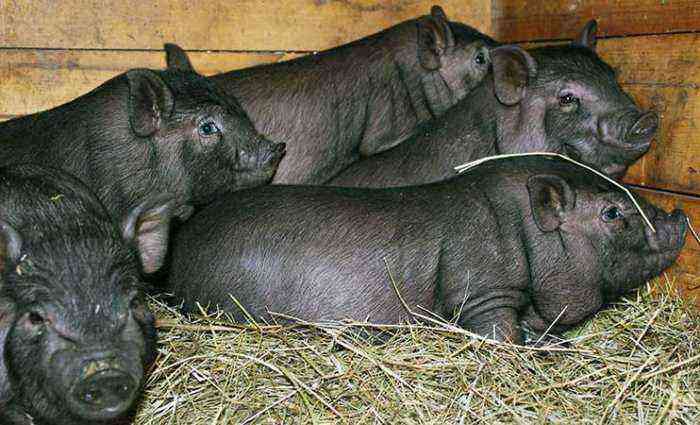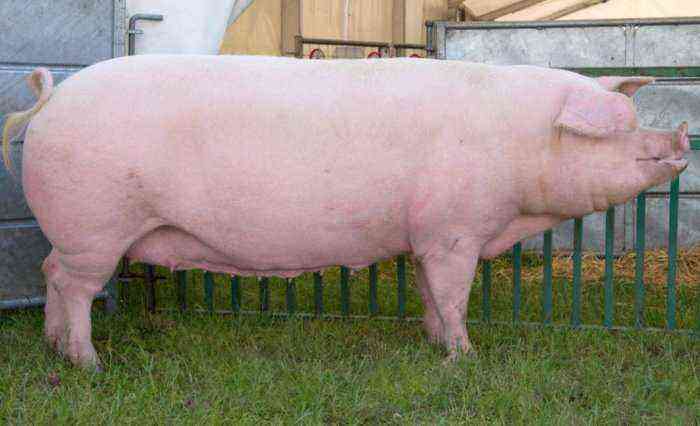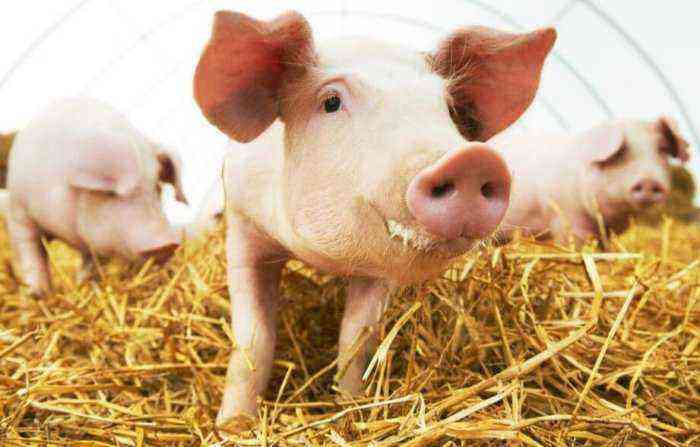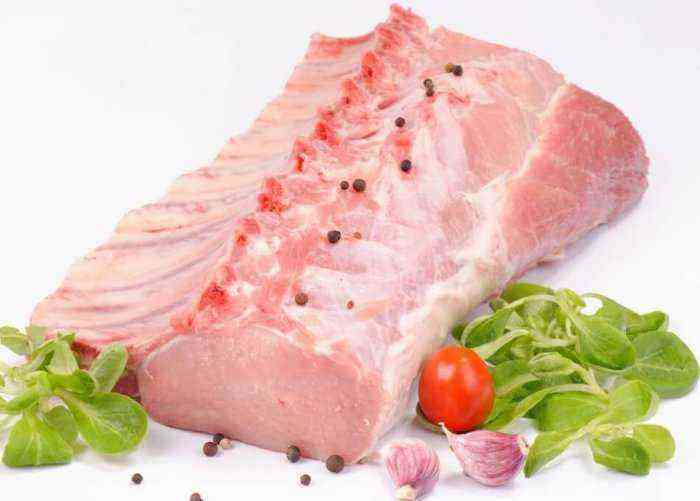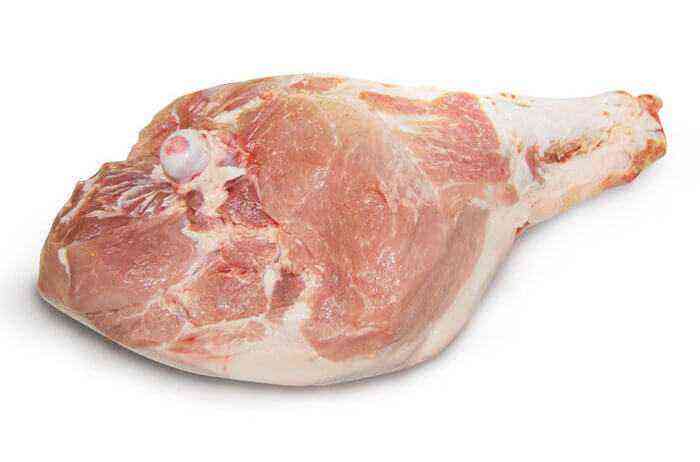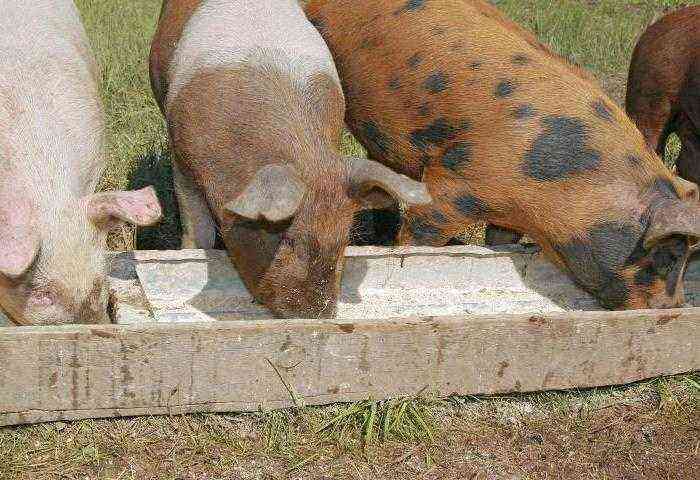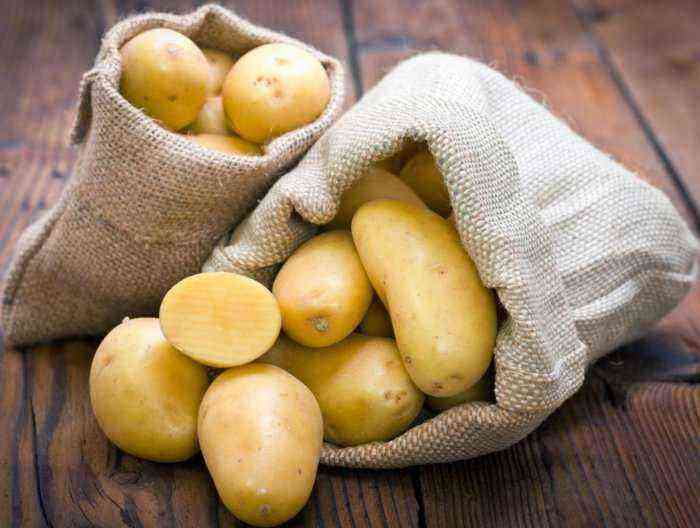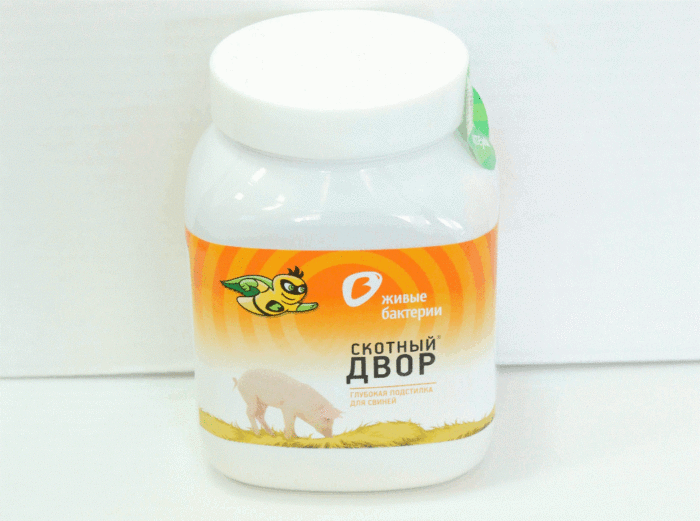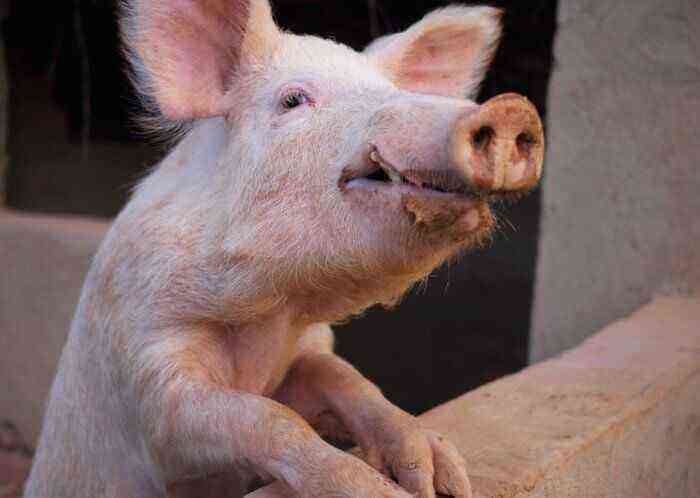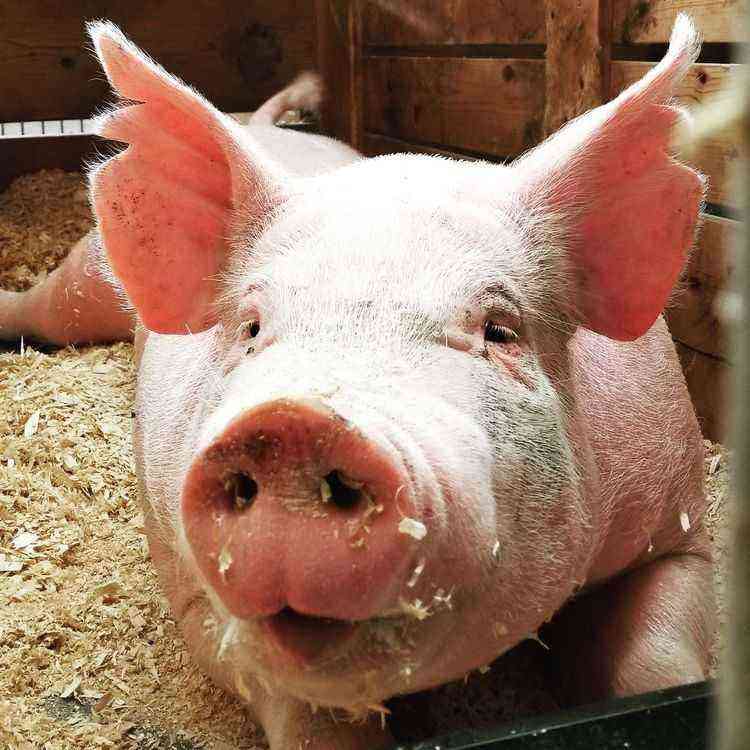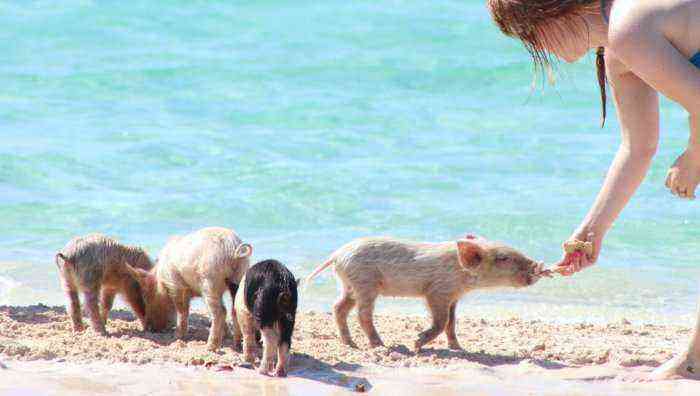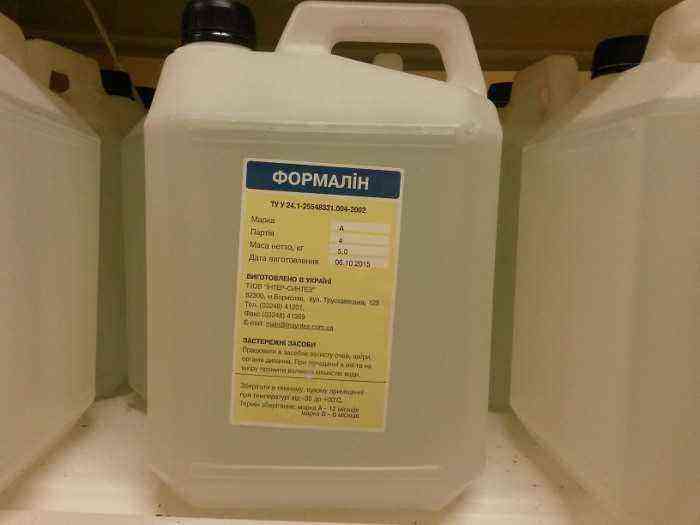It is believed that raising pigs is not difficult, as these animals are omnivores. There is some truth in this, of course. Since the process of feeding pigs is simplified thanks to a variety of feeding, which is easy to combine, combining home feeding and industrial feed. This “mix” may include: raw vegetables, grains and cereals, animal products, meat and fish production waste and other food waste.
Pork
Is it possible not to follow proven nutritional technologies and still get tasty and nutritious meat and lard? Unlikely. It is reckless to think that these unpretentious animals grow by themselves, and therefore it is enough to give pigs scraps of food with the addition of vegetables from the garden. Knowledge about the feed, diet and nutritional norms of animals will help eliminate the risk of illness and insufficient dynamics of growth and weight. Pigs should receive the necessary amount of vitamins, minerals and trace elements in a timely manner. This can only be achieved if the diet is balanced and varied.
Types of feed, classification
Since the pig has a single-chamber stomach, it is important that the diet is based on soft concentrated food, and not rough and succulent feed, with a high fiber content.
Feed classification
All feeds, depending on their effect on the quality of meat and fat, are divided into three classes (groups).
Influence of the feed group on the quality index of meat and fat:
Feed group
What indicator is affected
Food name
List
first meat cereals peas, barley, millet first meat juicy root crops and vegetables sugar beets, carrots, potatoes, pumpkin first meat greens nettle, clover, sainfoin, alfalfa first meat roughage hay dust from legumes (sainfoin, clover, alfalfa) first meat dairy products and waste of meat and fish production dairy products and waste of meat and fish production second lard wheat bran, rye second lard cereals, bread crops corn, buckwheat the third is badly reflected in the indicators of meat, and cereal lard, legumes oats, soybeans the third is poorly reflected on indicators of both meat and fat cake cake
2 months before the moment of slaughter, the third group of feeds is completely excluded, the percentage of feeds of the first group increases.
Types of feed and feeding rates for pigs
Dry food
Dry feeding can be an alternative to feeding pigs with food waste. Dry feeding includes a mixed menu of compound feed, grain “crushed”, bran, hay shavings, cake and dry additives. In this type of feeding, greens, vegetables and dairy products are not present, however, the pigs feel great, which has a positive effect on productivity indicators.
The owners either buy dry industrial feed or make it themselves. Premixes and vitamins are used as additives. The amount of additives depends on the breed of animals, age, structural features, individual preferences, etc.
number
culture
Unit.
Amount of feed for 1 pig weighing 50 kg.
The daily requirement of a pig in feed units
Number of feed units in 1 kg. stern
Pendant
1 wheat kg. 2,1 – 2,4 from 2 and above not less than 1,2 0,5 kg. 2 barley kg. 2,3 – 2,5 from 2 and above 1,21 0,5 kg. 3 corn kg. up to 2 from 2 and above 1,34 0,5 kg. 4 peas kg. from 2 from 2 and above 1,17 0,5 kg. 5 rye kg. 2 from 2 and above 1,18 0,5 kg. 6 oats kg. 2,1 from 2 and above 1 0,5 kg. 7 millet kg. 2,3 from 2 and above 0,96 0,5 kg.
Dry feeding is more common, as the pig’s digestive tract is less stressed due to the lack of a continuous fermentation process.
Feedstuffs
For the prevention of animal health, biofeed is needed. The inclusion of dietary supplements in the menu covers the body’s need for vitamins, minerals and trace elements. They improve well-being, support the functionality of all organs and tissues.
An important component in the nutrition of pigs is juicy greens, which can be consumed in the form of grass pellets or eat fresh grass on the run. Animals love to treat themselves to vegetable tops from the garden. This is the tops of carrots, and beets, and zucchini, weeds, etc.
In addition to vitamins, vegetables and fruits are added to dry premix additives. Pigs are happy to eat washed and chopped delicacies: beets, cabbage, apples, carrots, etc. Potatoes are pre-boiled before serving.
Protein and mineral supplements
Bioadditives improve the growth of piglets, support the development of young animals and adults. Protein supplements are used as food for pigs: milk, skimmed milk, yogurt, animal waste, etc. Waste from fish and meat is washed and crushed.
clabber
Mineral additives (Fe, K, Cl, etc.), mixed into food or poured separately (for example, coal and ash), pigs receive with calcareous tuff, chalk, eggshells. Novice farmers adjust the daily menu using the table “Consumption of a mixture of bone meal, table salt and chalk”, which contains detailed instructions on the ratio of consumption rates to the age of the animal, its sex and even the time of year.
feed yeast
The high content of proteins and vitamins, which are almost completely absorbed in the body, make this supplement especially valuable. The efficiency of productivity grows exponentially. Feed yeast is available in the form of powder or granules. Their use does not entail undesirable consequences: products from animals are safe for humans after use.
Yeast composition
Unit.
Белок
%
32-38
Пищевые волокна
%
1,8
Жир
%
1,8
Клетчатка
%
1,2-2,9
Протеин
%
38-51
Зола
%
10
The amino acids, vitamins, hormones and trace elements that make up the yeast promote growth, improve appetite and improve the health of pigs.
Beginner Tips:
- yeast at least 30% of the feed from the daily menu. For example, from 2 kg. feed mixtures 600 g must be mixed with yeast.
- baker’s or brewer’s yeast can act as an analogue of fodder yeast.
Types of feeding
Currently, three methods of feeding pigs are known: dry, liquid and wet feeding (intermediate type). In large farms, dry feeding is more popular. At home, all 3 methods are used, but more often they resort to the second, so in the backyard it is easier to diversify the composition of food with food waste, mash, stews with dairy products, grass, etc.
Pig masher
Dry the type of feeding does not require a lot of time: a premix is added to the feed, and the drinker must be provided with water. It is possible to prepare the feed in advance by mixing it with a premix (at the rate of 10 g per 1 kg of finished feed). Extruded feeds are rich in vitamins and minerals and have a number of advantages:
- manufactured and ready to use;
- contribute to the rapid growth of the weight of pigs;
- do not cause problems in digestion;
- lack of smell of ammonia in manure;
- the food does not sour and does not spoil.
With dry feeding, piglets receive a balanced diet and therefore grow quickly.
Liquid Meals are prepared by hand. The feed contains curdled milk and skimmed milk, food leftovers from the kitchen. Do not give waste containing household chemicals.
At home cultivation is used intermediate wet feeding. Mixtures of boiled potatoes with grass, chopped vegetables, food waste, cake, etc. are served as feed. The disadvantage of the mash is that they quickly turn sour, so it is important to clean the feeders often.
Feed preparation
Most of the feed before consumption needs preparation or processing. These measures are necessary in order to increase the nutritional value, improve the digestibility of food or for the purpose of disinfection. The preparation process depends on the method of implementation and is divided into methods: mechanical, physical, chemical and biological.
Preparation of vegetables
The most common and affordable vegetable is the potato. In its raw form, it is poorly digested in the pig’s stomach, so it is washed, boiled, and then crushed. The water in which the potatoes were boiled should not be added to food due to the content of a toxic substance – solanine. As a rule, potatoes are mixed with crushed dry or steamed grains, adding green fodder.
Potatoes for pigs
Carrots, beets, pumpkins and other gourds are usually served raw, chopped. Do not grate and chop vegetables for the future – they can turn sour or rot. If carrots, beets or pumpkins were previously boiled, then they can be added with the water in which they were boiled.
Preparing hay and rot
Roughage (hay and its dust) should be steamed for several hours to improve the digestion process. Pigs do not eat long stalks, so they need to be crushed as much as possible before feeding.
Cereal preparation
Special attention requires preliminary preparation of cereals. In general, it is not effective to feed cereals – the grain is not digested and goes into manure, passing through the pig’s stomach in transit.
The best processing of cereals is grinding. The finer the grind, the better. Grind corn and oats should be as needed because of the fat contained in the grains – it is able to quickly oxidize and turn bitter, so you should not stock up on such crushed grains for future use.
Peas and lentils play an important role in feeding, but they should first be boiled for maximum absorption.
Useful qualities of grain increase if it is germinated. This process is quite simple. Low boxes filled with grain are placed so that sunlight falls on them. Within 9-10 days, the grain is watered. The grain will be ready to eat as soon as the sprouts stretch up 8-10 cm. This method is often used when feeding small piglets and sows.
On a note! To the use of cereals suckling pigs are accustomed to the supply of grains roasted to a dark chocolate shade – this contributes to the growth of teeth in small piglets.
Preparation of fresh green fodder
Greens supplements also require attention when preparing for feed. Rough and dried stems are removed from the grass, leaving leaves with twigs, then it is finely chopped. Harvesting for the future is not recommended, as it will wither or rot.
Preparing greens for pigs
Combined silage preparation
The useful properties of silage are improved if it is combined before serving. Pigs are happy to feast on compound feed from crushed juicy root crops, vegetables and green mass. It can be sugar and semi-sugar beets, carrots, cabbage, as well as lupins, green biomass of legumes and corn. This way of storing food is an excellent biopreservation.
Important points when preparing a good combisilos:
- All vegetables and herbs have a certain ensiling period. For example, ensiling peas and lupine is best done before flowering; the most successful time for corn is the phase of milky-wax maturity; vegetables – in the period when they are fully ripe.
- Ready and crushed silage is strongly compacted in a trench or in a tank to force out the air. The trench must be lined, in the case of laying silage in a container, polyethylene packaging is used. Harvesting combisilos is an excellent opportunity to preserve perishable feed by the biological method.
- You can not ensil the tops, as well as nettles.
- Do not feed frozen and moldy silage to animals – this can harm their health.
Popular Ensiling Combination Recipes:
Ensiling Recipes
Feed yeasting
Yeasted feeds occupy 1/3 of the total mass of the concentrate. This method improves appetite, helps the absorption of other feeds, and affects the growth of the animal’s weight.
Yeasting with baker’s yeast is carried out by two methods: unpaired and sourdough (sourdough).
Safe method: pour warm water (no more than 40 degrees) into a container of 20 liters; add 100 grams of diluted yeast; pour into the resulting solution, stirring, 10 kilograms of dry fine food; leave for 8 hours of fermentation, while stirring the liquid mass every 20-25 minutes.
starter method (the only difference is in the preparation of the sourdough): prepare the sourdough: 20 liters of warm water (5 degrees) are added to a 40-liter saucepan, in which 100 grams of yeast are stirred; add 2 kg. compound feed; mix and let stand. After 5-6 hours, add 15 liters of warm water and 7-9 kilograms of dry concentrate again. Wait another 2 hours and the dough can be fed.
Harmful feed
Be sure to check the quality of feed:
- if mold appears in the mixture or parasites are wound up, it must be destroyed;
- not all herbs can be given as food to pigs, so among them there are poisonous and harmful plants: euphorbia, black nightshade, hemlock, dog parsley, caustic buttercup, horse dill, pikulnik and others. In order to prevent livestock poisoning, you need to carefully consider the choice of grass;
- cotton cake and castor beans are pre-treated with heat treatment or alkali to neutralize the poisonous substance – the alkaloid gossypol;
- sprouts on potatoes and green tubers are also dangerous for digestion, like water after boiling potatoes;
- cooked beets should not be left for a long time in hot water – it provokes poisoning.
Sprouts on potatoes are dangerous for digestion
How to feed: diet and norms
It is important to adhere to certain rules and conditions, the observance of which guarantees good pig health and efficient productivity.
Rules that will help to escape from digestive difficulties:
- observe the feeding regime, regularly clean and wash the feeder;
- combine and balance the diet with various supplements;
- serve only clean food, excluding mold and parasites, rotten and spoiled products;
- grind all feed without exception;
- in free-range conditions, do not allow foreign objects to enter the ground, because pigs love to tear up the ground and pick everything up from it.
Factors affecting the daily feed intake of pigs:
- period of the year;
- the age of the animal;
- the sex of the animal;
- pig health.
The daily feeding rate of pigs can be influenced by various factors – be it weather, climate, or the biological characteristics of the animal. For example, in the cold season, additional energy is needed for warming, therefore, in winter, the feed standard per day increases, and in the summer months, on the contrary, it decreases. For sows (lactating, pregnant) increase the daily rate and nutritional value of feed.
Proper feeding must be carried out throughout the life cycle of the pig. And the beginning of the process of feeding comes from birth. At first, piglets feed on mother’s milk, but from the fifth day of life, pig breeders recommend starting complementary foods.
Sosunov
Mother’s milk for any mammal is a guarantee of good health and good development of the body in all subsequent years. Milk strengthens the immune system, providing all the necessary substances and vitamins to the suckling pig from the first day of life. The first two weeks is the only food for piglets.
Milk for suckers is very useful
After 2 weeks, the need for increased nutrients increases in piglets, and lactation decreases in sows at this point.
Experienced farmers recommend starting to accustom piglets to solid feed from the fifth day of life. In order for piglets to grow and strengthen their teeth, they are given wheat, corn or barley grains fried to a dark chocolate shade as complementary foods. To begin with, little by little the grains are scattered directly on the dry floor, later they are poured into small troughs.
In order for the food in piglets to be well absorbed and digested, acidophilic yogurt is added to the diet, thereby increasing the fermentation of the stomach.
After another couple of days, the menu is slightly diluted with premixes with bone meal and chalk.
Early addition of succulent feed is not recommended. After the 10th day of life, babies are given a taste of grated carrots. Later – add grated pumpkin and beets, combined silage.
Potatoes, boiled and chopped, are given to 20-day-old piglets.
On day 45, the grown piglets are weaned from the sow and transferred to a wet or dry feeding method. During this very period, the sows are reduced the daily rate of succulent feed, replacing them with dry feed, in order to reduce the amount of milk in sows.
On the 50th day of life, piglets are transferred to 3 meals a day, they are transferred to another room, separated from sows.
At this stage, there is an increased growth of the skeleton of animals, therefore, a large amount of animal protein is included in the diet: these are bone and fish meal, yogurt, low-fat milk.
Feed percentage balancing recommendations:
- concentrate – 80%;
- vegetables and root crops – 10%;
- flour from legumes – 5%;
- fish, bone or meat and bone meal – 5%.
Piglets on rearing
A change in the menu of young animals occurs when they reach a weight of 20-25 kilograms. From that moment on, they are classified as gilts. For the active growth of the body, more and more vitamins and minerals are required – the concentrate is mixed with green mass, juicy root crops and vegetables.
Grass is added to the diet
Grass is also added to the diet. Part of which is served fresh, the other is pre-steamed in boiling water. After a few hours, crushed boiled potatoes and dry food are added to the steamed grass. The consistency of this mixture should be similar to slurry.
adult pigs
As soon as the piglets reach a weight of 40-50 kilograms, they move from the “gilts” category to the “adult pigs” category. At this moment, pigs are fattened according to a special menu, choosing at their discretion either a diet to improve the quality and volume of meat, or to increase the volume of fat.
The norm of the average daily increase in live weight in a given period of time is considered to be 650 grams. At the age of six months, the weight of pigs reaches 100-120 kg. The standard cost per 1 kilogram of weight should not exceed 4 feed. units
In order to increase the effectiveness of the result in daily weight gain up to 850 g, the most nutritious dry food with the lowest fiber content is introduced into the diet.
Boars producers
When feeding boars, an important difference is the control over their condition. From the fact that male pigs can be malnourished or, conversely, become obese, their sexual activity and productivity directly depend.
During sexual activity, boars require an increase in the norm of nutritious feed due to an accelerated metabolism.
If the males are overexposure (copulation restrictions), then the feeding rate is reduced by 10-20%, taking into account their actual weight.
Depending on age, males are offered different volumes of dry food. Proportions must be made based on one centner of live weight: growing – 1,6 kg., Adults – 1,4 kg. The basis of the menu is cereals, cakes, meal, waste from meat and fish industries, peas.
Sows
The menu of sows may vary depending not only on their weight and age, but also on their condition at the moment:
- whether they are subject to insemination (single);
- pregnant (pregnant);
- whether they feed piglets (lactating).
During the first 84 days of pregnancy, sows do not need an increased need for energy feed. One month before pregnancy, the amount of energy feed is increased by 20%.
Pregnant sow
More nutritious feeds are offered to young gilts under the age of 2 years.
Pregnant queens are kept under special control – the weight of the pig should be moderately well-fed. Neither underweight nor overweight is allowed.
At the time of lactation of the sow, the amount of nutrients in the diet increases significantly. The amount of feed should be sufficient so that lactation does not decrease and this does not lead to starvation of the piglets.
The farrowed sow is not fed during the first hours, but only allowed to drink clean water. After 5 hours after farrowing, she is given about 0,7 kilograms of liquid concentrate. In subsequent feeding, the standard increases to 1 kilogram. Throughout the week, each feeding standard gradually reaches the usual portion. Violation of this rule is fraught with the fact that a lot of milk will remain in the body and lead to illness in the sow.
When compiling a menu for pigs, it is important to take into account the recommendations of experienced pig breeders, following all the rules. By ignoring important advice, beginners risk incurring unnecessary costs, and animals will develop incorrectly and unevenly, which will negatively affect the quality characteristics of products. By observing the norms and diets of pigs, farmers will be able to provide the consumer’s table with healthy and tasty meat and lard products.
